Published on April 29, 2013
Brig. Gen. Vladimir Kokkinaki and his copilot, Major Mikhail Kh. Gordienko, had set out from Moscow on April 28, 1939, in the Russian prototype Ilyushin TsKB-30 twin-engined bomber on an international mission. Though the aircraft was a bomber by design, their flight was one of peace. Nonetheless, it wouldn’t be long before World War II would begin in Europe with the invasion of Poland. Yet now, their plane, christened the “Moskva” and painted in bright red, was to set new records and show the world that Russia was a modern, powerful and capable nation. Their flight was expected to be a 24 hour, non-stop journey, taking the plane far to the north of the usual commercial aerial routes, cutting the distance by flying closer to the Arctic. If successful, it would land them in the history books, pioneer a new northern “Great Circle” route to span the distance from Europe to the USA, and, above all, arrive at New York’s Floyd Bennett Field in time to highlight Russian’s participation in the 1939 World’s Fair, “The Land of Tomorrow” held that year in New York City.
The two men were more than 20 hours into their flight when weather conditions began to deteriorate. Flying higher in hopes of penetrating the clouds and storms that formed a wall ahead, the two men went onto oxygen. They were exhausted too, but soldiered on for the Rodina, Stalin’s Russia. BG Kokkinaki was already a “Hero of the Soviet Union” and he knew that this flight would undoubtedly establish him in the pantheon of the most favored Russian pilots in history. It seemed, however, that the weather over eastern Canada, south of Labrador, was conspiring against him. Surely, he would prevail, he considered, as the plane entered the clouds.
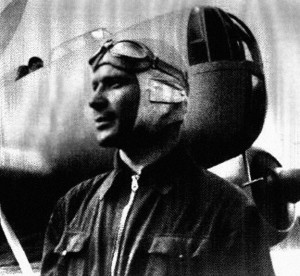
The Plan
For weeks beforehand, the two men had prepared for the flight, carefully charting an innovative flight plan for a non-stop journey that would take advantage of the curvature of the Earth to shorten the distance between Moscow and New York. This was the Great Circle Route, which meant that the men would fly at the very edges of the Arctic, across the top of the globe, taking advantage of the Spring weather. Their exact route was to fly from Moscow to Novgorod, USSR; then Helsinki, Finland; Trondheim, Norway; Reykjavik, Iceland; Cape Farewell, Greenland (also known as Uummannarsuaq); Labrador, Canada; and then to arrive at New York City’s Floyd Bennett Field on Long Island.
BG Kokkinaki was no stranger to long distance flying. Earlier, he had flown the very same plane on a record-setting flight with copilot A. M. Berdyanskij. Together, the men had made it from Moscow to Spassk-Dalny in Primorsky Krai, Russia, a point that was in the southeasternmost corner of the USSR, nearly bordering with the northeast corner of China. That flight had been a non-stop affair of 24 hours and 36 minutes, covering a total distance of 4,710 miles. For most of the flying, the men had been on oxygen as they had averaged an altitude of 23,000 feet. New York would be farther away, to be sure, but BG Kokkinaki knew he was up to the challenge.
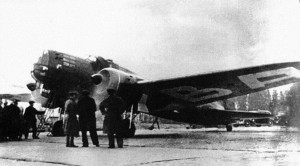
The Plane
The plane that the pair intended on using was the prototype of Russia’s latest bomber design from the Ilyushin Design Bureau. It was known as the TsKB-30 “Moskva”, and it was painted a bright red. In bold white Cyrillic lettering underneath the wing, the word, “MOSKVA” was spelled out for all to see. The plane sported two engines, both license-built Gnome-Rhône Mistral Major 14Kdrs radials that had been manufactured by Tumansky. Properly tuned and at altitude, each engine could produce as much as 760 hp. This gave the plane a cruising speed of over 200 mph.
The TsKB-30 was derived from an earlier wooden prototype known as the TsKB-26. In that very airplane, BG Kokkinaki had performed the world’s first loop in a twin-engine airplane, having done so in front of no less than Stalin himself. That had more than demonstrated the plane’s power, maneuverability and ruggedness. The TsKB-30, however, was an improvement over the earlier -26 prototype. This newer plane was all-metal and had included various modifications learned from the -26 design. Ultimately, the TsKB-30 design would be designated the DB-3, which would become one of the USSR’s key medium bombers of World War II. In terms of performance, arguably it was the fastest, most powerful, longest range bomber in any nation’s air force. Even more impressive, it could carry a bomb load of 2,200 pounds.
The prototype TsKB-30 carried no armor or weapons and thus was the ideal plane to herald the Soviet banner abroad for the World’s Fair. It would be a mission of peace, but also one that was designed to demonstrate Russia’s new-found military prowess. Indeed, there could be no better demonstration of Stalin’s ascendency as a world leader than the USSR’s pavilion at the World’s Fair. That forum allowed the USSR to show its technological greatness and this was aptly demonstrated at the expansive Russian Pavilion. Inside, the Pavilionoffered a full-sized replica of the Moscow Metro’s Mayakovskaya station, complete with finely reproduced mosaics and marble floors.
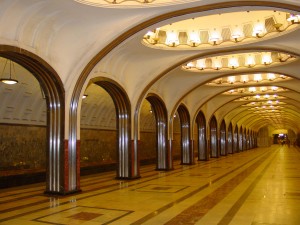
In fact, the Mayakovskaya station that made New York’s subways appear dull and utilitarian. Designed and assembled by Alexey Dushkin, one of the USSR’s leading architects, the entire Metro stop was reproduced in New York for the World’s Fari. Stainless steel and rhodonite columns lined the gallery of granite and marble flooring while ceiling mosaics were recessed above the columns, depicting idealized Soviet scenes of workers, farmers and revolutionaries. The station design was the very heart of Stalin’s vision of the New Soviet Man.
Likewise, the Ilyushin TsKB-30 was the idealized vision of Stalin’s future air force and, fittingly, BG Kokkinaki and his copilot Maj. Gordienko were the ideal Soviet military aviators, the perfect ambassadors of the new USSR, a country that had emerged from the trying times of the 1920s and 1930s as a world power.
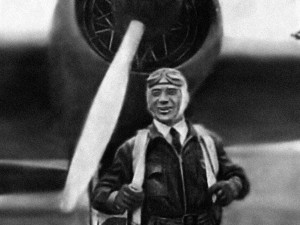
The Flight
For the first 20 hours after take off, until the two pilots reached Canada, everything about the flight and the TsKB-30 had been perfect. Yet as they passed Labrador, they were astonished to see that the storm clouds ahead completely blocked their route. The bases of the clouds were nearly touching the land below while the tops towered above the maximum altitude that their airplane could fly. Knowing that a crowd had been assembled at Floyd Bennett Field — there were even to be twelve schoolgirls with flowers — they pressed on, hoping to punch through the weather and fly into clearer air farther south. The two men attempted to communicate by radio but found little more than static over the HF sets as their response. In short order, they were into the clouds and flying on instruments. At 27,000 feet, both men were on oxygen.
The going was rough. Turbulence and winds buffeted the aircraft. Adverse headwinds slowed their progress. Without radio navigational aids and with no visual references, they were dead reckoning. After several hours in the clouds, often unable to hold a heading, they were no longer sure of their position. He realized too that the static over the HF was an indication of a radio antenna failure since the radio direction finding gear had also failed. Then, unexpectedly, BG Kokkinaki passed out. Perhaps it was an oxygen system failure, perhaps it was exhaustion mixed with stress, but Maj. Gordienko was alone with the task of flying the plane. Quickly, he discerned that he had no choice in the matter. Sundown was fast approaching as rain lashed the plane. Unable to revive BG Kokkinaki, he descended through the clouds, hoping to find a field to land in far below. His best guess was that he was somewhere over eastern Canada.

When he broke out at low altitude, he found himself over the water. Shortly afterward, he was relieved to find a small island. He circled it closely, looking for a field that might be suitable for a landing. Also, he scanned away from the island looking for other land, hoping to see something else in the distance. He saw too that there was a lighthouse on the island, which implied it was occupied, though he could see few dwellings. If he left this one spot in the midst of the ocean to probe farther to the west, would he find land or more open sea? Without confidence in his location, it would be guesswork and, if he was wrong, he might not even be able to find the island again after dark. Moreover, even if he found land farther to the west, would he arrive after sunset and, in the darkness, be unable to land anyway?
The Crash Landing
Maj. Gordienko considered his options. Even now at lower altitudes and without the need for supplementary oxygen, BG Kokkinaki would not regain consciousness. Carefully circling in the grey mist, he made a final survey and chose the best field for a crash landing. There would be no use of the landing gear given the rough terrain below. The plane would be damaged but what choice had he? As the sun set and dusk extended over the fields, he reduced power, dropped the flaps and made as slow an approach as was possible.
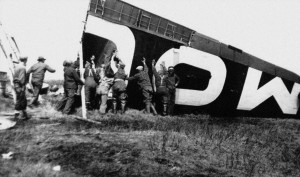
The plane hit the first uneven slope of the rough fields in a belly landing and immediately relaunched itself back into the air. Keeping control, Maj. Gordienko resettled the plane back onto the earth and held on as it slid agonizingly to a stop. Quickly shutting off all of the systems, he was surprised to see that BG Kokkinaki had regained consciousness. Confused and blinking through the crisis, BG Kokkinaki joined Maj. Gordienko in the evacuation of the airplane. Soon afterward, a French-Canadian villager approached and greeted them. Exchanging pleasantries, neither quite understanding the other due to language difficulties, they eventually established that they had landed on Miscou Island, on the very north-easternmost tip of the Canadian province of New Brunswick.
The island was remote enough that there would be no repairs possible and no continuing onward. The Moskva had seen its final flight. In addition, it would be some time before they could even get off the island. The best they could do was use the telegraph at the lighthouse and communicate that they had at least come down safely. The crash landing had taken place at sundown today in aviation history, on April 29, 1939.
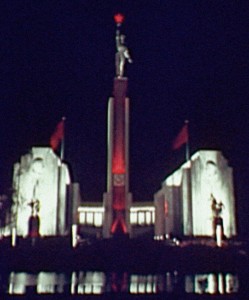
Aftermath
The flight of the Moskva at the hands of Brig. Gen. Vladimir Kokkinaki and Major Mikhail Kh. Gordienko was a great achievement, even if it was ultimately unsuccessful. Having mapped a northerly, Great Circle route from Moscow to New York, the pair had pioneered a new corridor for future air traffic — and indeed, that same route is still in use today. Further, even in failing, they had flown nearly 5,000 miles in 22 hours and 56 minutes, averaging 216 mph.
When they reached New York City some weeks later, they were welcomed as heroes nonetheless. The vast majority of New Yorkers recognized that the flight had been to the extremes of maximum range and performance. That it had ultimately failed had more to do with the weather than anything else. In fact, the pilots reported that they had two hours of fuel on board at the time of their crash landing. It was ill-luck that brought them down in the end, but it was a truly daring flight nonetheless.
As for the USSR’s pavilion at the 1939 World’s Fair, ultimately, it won the Grand Prize as the finest built, best designed and most amazing pavilion in the entire exposition. The mission of the Moskva, though it had just spanned from Moscow to Miscou, had been a successful. Russia’s World’s Fair exhibition was entirely a success. The most important thing too was that Stalin was suitably pleased.
Today’s Aviation Trivia Question
What happened to the crash landed wreck of the TsKB-30 “Moskva” at Miscou Island?

That’s why I looked this up!
The ‘Moskva’ was disassembled and taken back to the USSR on a Russian ship.
In my opinion, there’s another event worth reporting for this story — the Ham Radio operator, Mr. Gene Fougere (VE1BB) of Shediac, N.B., Canada, was in contact with pilots and passed on the received radio traffic, in code, CW to RCA Radio in New York. He was in touch with the president of RCA on the telephone, and was involved for a few days, passing the information from Miscou. He was even offered a job by the president of RCA afterward.
Hello,
I would like to contact the author of this article and find out what his sources were. I’m a relative of Vladimir Kokkinaki, closely familiar with the details of this flight.
The story of Maj. Gordienko landing the plane on Miscou, is completely improbable – he was not a pilot, but a navigator and had no access to flight controls of the Moskva due to the aircraft design.
Thanks in advance,
Alex Tarussov